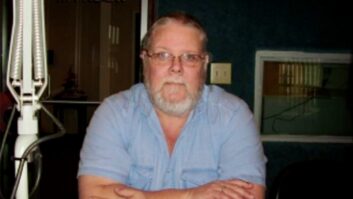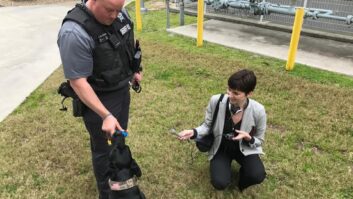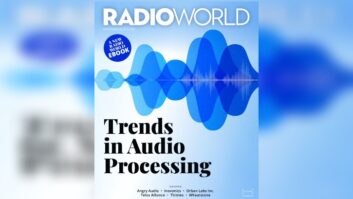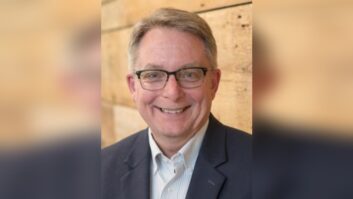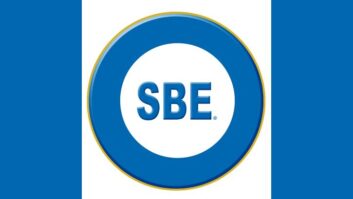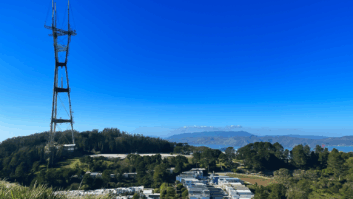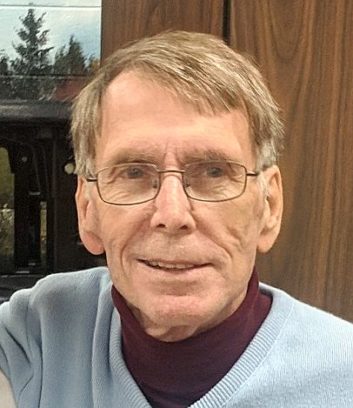 Rick Edwards, whose career included engineering leadership at Guy Gannett Broadcasting and frequency coordination work for the Society of Broadcast Engineers, died in October. He died at a hospice facility Woodstock, Ga., at age 74, according to an obituary provided by his son Jonathan Edwards, P.E.
Rick Edwards, whose career included engineering leadership at Guy Gannett Broadcasting and frequency coordination work for the Society of Broadcast Engineers, died in October. He died at a hospice facility Woodstock, Ga., at age 74, according to an obituary provided by his son Jonathan Edwards, P.E.
Richard L. Edwards was born in North Carolina and began his engineering career with jobs at the state’s WTVD(TV), WPJL(AM), Bob Raleigh Productions and WCHL(AM) as an engineer for the radio network of the University of North Carolina.
His family described him as “an avid learner and self-taught” though he also spent time at the North Carolina School of Broadcasting in Charlotte. “He frequently ran into a Clemson student named Ron Rackley in the press box when UNC played Clemson,” according to the obituary.
In the mid-1970s Edwards became station engineer for WLXG(AM) and WKQQ(FM) in Lexington, Ky.; worked for the radio network of the University of Kentucky; and did some award-winning work in advertising production.
“In his early days, Rick was quite innovative in designing remotes for the radio networks that covered entire arenas back when that range was uncommon,” the family wrote. “Rick worked alongside well-known talents Woody Durham (University of North Carolina) and Cawood Ledford (University of Kentucky) and was radio network engineer at the 1977, ’78 and ’79 NCAA Men’s Basketball Final Fours.”
In 1979 he accepted an engineering position for Guy Gannett Broadcasting that took him, his wife Jane and their son Jonathan to Florida.
“Rick called Miami’s WINZ(AM/FM) home for the next 15 years. Guy Gannett was based in Portland, Maine, and operated four TV and eight radio stations around the country, which Rick travelled extensively to manage.”
WINZ(AM) had severe nighttime interference from a station in Cuba that exceeded treaty limits. “In 1981, Rick asked the FCC to permit an increase in nighttime power from 10 kW to 25 kW to overcome this interference and was granted an STA which still applies today.”
Soon after he led a project to construct a new tower and relocate the transmitter site for WINZ(FM) to overcome a difficult STL path and multipath issues caused by the construction of high rises in Miami. “This tower was overdesigned to support not only three television stations and 10 FM stations, but many other RF services within its 17,000-squarefoot transmitter building. The tower utilized three 12-foot platforms and was the beginning of the vertical real estate boom.”
When it was completed in 1985, the facility transmitted more than 18 MW, the most of any single facility in the U.S., the obituary said. “This successful project opened up a new business revenue stream for Guy Gannett and Rick was promoted to director of engineering and vice president.”
Edwards soon tried to increase the power of WINZ(AM) from 46 kW-DA to 50 kW-ND, but a nearby FCC monitoring station prohibited the change. “Rick lobbied to relocate the monitoring station to Vero Beach, which then allowed the power increase.”
Also in the 1980s, he led another multiuse, tall tower projects in the Orlando market, upgraded WPLP(AM) in Tampa to a six-tower directional array and received more nighttime power to overcome Cuban interference, “becoming the first station to operate with more power at nighttime than daytime.” He also helped Guy Gannett identify an opportunity to have an AM/FM pair in Orlando, a transaction that led to the sale of WPLP in a swap arrangement.
“Rick’s final project involved his former acquaintance, Ron Rackley, in upgrading this Orlando AM station to a 50 kW-DA. The FCC was not approving power increases to 50 kW anymore, but more lobbying by Rick proved successful. Under Rick’s direction, the entire six-tower facility was constructed and operational in under 5 months.”
Edwards was also an amateur radio operator and a member of the Society of Broadcast Engineers, Association of Federal Communications Consulting Engineers and Society of Motion Picture Television Engineers.
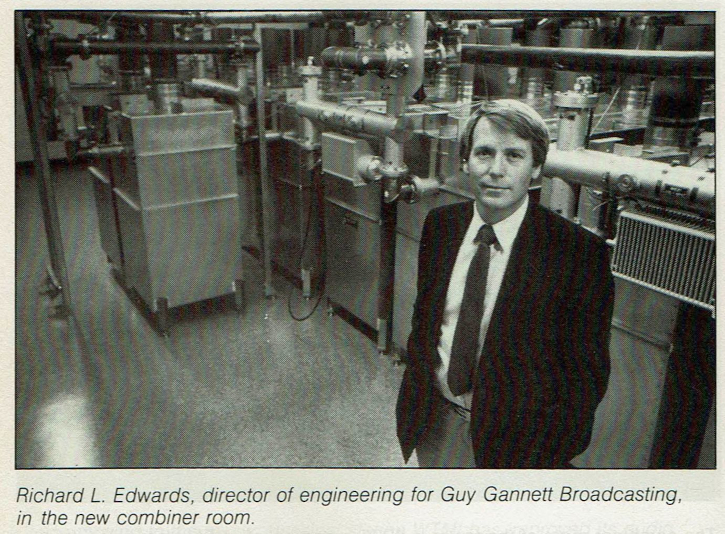
During his “middle years” he worked as an NFL game day coordinator and SBE national frequency coordinator and vice president. In 1995, he assisted the NFL in coordinating Super Bowl XXIX in Miami, and went on to lead coordination efforts for numerous Super Bowls. “In Super Bowl XXXIV (Atlanta), Rick invited the local FCC field office to come assist. It was the first time the FCC had been invited. It went so well that today, the FCC is a regular attendee at Super Bowls.”
In the 1990s, Edwards helped found CityScape Consultants to serve local government entities in working with cellular providers when siting towers and understanding the 1996 Telecommunications Act. He wrote the business model with partners Anthony Lepore and Kay Miles; and he was CityScape’s president and chief engineer until August 2021.
Edwards had an early interest in radio. “Growing up he would play DJ, conduct radio shows with his nephew and build kit radios with his uncle who was an engineer,” according to the obituary. He attended Campbell College, where he studied psychology; and he served in the U.S. Army in the 1960s, which took him on a tour of duty in Vietnam as a maintenance data specialist in radio communications. He came home with a Purple Heart.
Donations can be made to the scholarship funds of the Association of Federal Communications Consulting Engineers or the Society of Broadcast Engineers. A celebration of life will be held in the Raleigh area at a future date; for information email [email protected].
